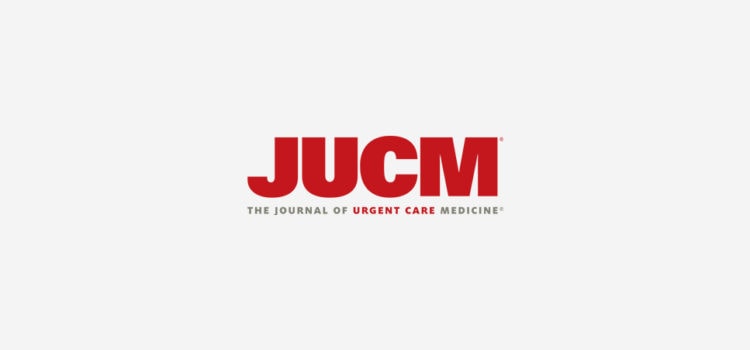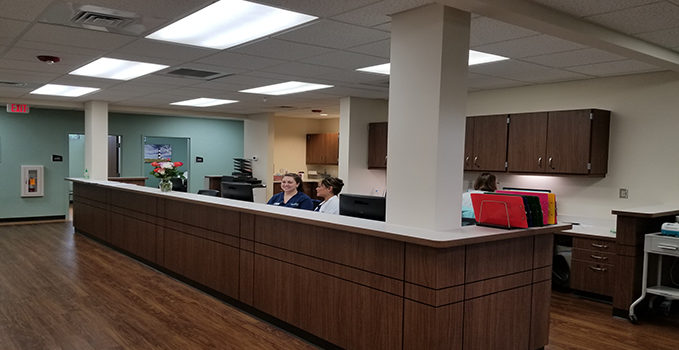Q: The Centers for Medicare and Medicaid Services (CMS) started issuing new Medicare cards to beneficiaries in April of this year. What do I need to know about these changes to limit disruption to my patients and medical practice? A: CMS is required to issue new Medicare cards as a part of the Medicare Access and CHIP Reauthorization Act (MACRA) of 2015, which mandates that CMS remove Social Security Numbers (SSN) from all Medicare cards …
Read More
The Effect of PECARN Guidelines on Minor Head Injury Referrals from the Urgent Care Center to the Emergency Room
Cathleen DeLaney DNP, MSN-FNP, APRN and Kris Skalsky MSNEd, EdD, RN Abstract Background and Purpose: The focus of this project was to determine if an evidence-based educational intervention had an impact on reducing the number of pediatric head injury referrals from the urgent care center to the emergency room. The urgent care center often makes referrals of pediatric head injury patients to the ED, contributing to the overutilization and overcrowding of an already taxed system. …
Read MoreOne More Look at Head Injury Presentations in Urgent Care
In this issue, we’ve offered an urgent care perspective on which patients presenting with head injury are most likely to require a scan, and shared insights into one urgent care center’s efforts to get a handle on which pediatric patients with head injury really need to be transferred to the emergency room. The fact is that the CT scan remains the standard for assessing for traumatic brain injury. The question that remains is, what’s next? …
Read MoreEffectively Utilizing 90-Day Probationary Periods for New Employees
Urgent message: A 90-day probationary period suspends the standard employment rules for new employees, enabling them to learn the position, but providing an “out” before the employee becomes too entrenched. Alan A. Ayers, MBA, MAcc is Chief Executive Officer of Velocity Urgent Care, LLC and is Practice Management Editor of The Journal of Urgent Care Medicine. Introduction Whenever a company hires a new employee, despite the most sound recruiting and interviewing processes, they’re taking a …
Read More
New Rules for Beneficiary Inducements at Urgent Care Centers
Urgent message: Unlike other retail businesses, which commonly provide gift cards and other incentives in marketing or as remediation for unsatisfactory service, urgent care operators must be aware of various statutes prohibiting “inducements” to patients. Alan A. Ayers, MBA, MAcc is Chief Executive Officer of Velocity Urgent Care and is Practice Management Editor of The Journal of Urgent Care Medicine. People in the U.S. love the idea of getting something for nothing. Businesses across the …
Read More
Thinking Differently About Paid Time Off
Alan A. Ayers, MBA, MAcc is Chief Executive Officer of Velocity Urgent Care, LLC and is Practice Management Editor of The Journal of Urgent Care Medicine. Urgent message: As 24/7 connectedness becomes the norm in the modern workplace, innovative technology companies have begun exploring unlimited paid time off (PTO) policies as a way to promote better work/life balance. Could unlimited PTO also become a trend in a healthcare industry that is likewise becoming increasingly 24/7 …
Read More
Reduction in Reimbursements for Modifier -25
Q: Last fall, Anthem Blue Cross Blue Shield sent a notice to physicians in several states regarding their intent to reduce reimbursement rates on any evaluation and management (E/M) services billed with modifier -25, “significant, separately identifiable E/M,” by 50% effective January 1, 2018. What are the implications for urgent care? A: This announcement initially spurred action from the California Medical Association (CMA) to coordinate with the American Medical Association (AMA), as well as other …
Read More
When is On-Demand Care Most In-Demand?
The combination of convenience and quality is the hallmark of the urgent care industry. As time goes on and patients have an increasing array of options, however, “convenience” may be a relevant term (for example, virtual care is becoming more appealing to consumers and payers). Urgent care has taken notice and continues to expand its offerings, from the foundational walk-in visits for a sore throat to school physicals, return-to-work clearance, and support for cancer-related problems. …
Read More
Facility Design: Cultivating Collaboration in the Back Office
Alan A. Ayers, MBA, MAcc is Chief Executive Officer of Velocity Urgent Care and is Practice Management Editor of The Journal of Urgent Care Medicine. Urgent message: To move patients through the center quickly, urgent care demands near-constant communication among providers and staff. Eliminating enclosed provider offices in favor of shared workspaces promotes back office collaboration while keeping providers focused on clinic activities in real time. Urgent care reflects the seismic shift occurring in healthcare—traditional, …
Read MoreThe Incidentals of ‘Incident-to’ Billing
Q: I plan to hire physician assistants and other nonphysician providers in my urgent care clinic. I understand that I can use “incident to” billing to have their patient visits reimbursed at the physician rate. What are the rules for “incident-to” billing? A: The Centers for Medicare and Medicaid Services (CMS) defines “incident to” as “those services that are furnished incident to physician professional services in the physician’s office (whether located in a separate office …
Read More